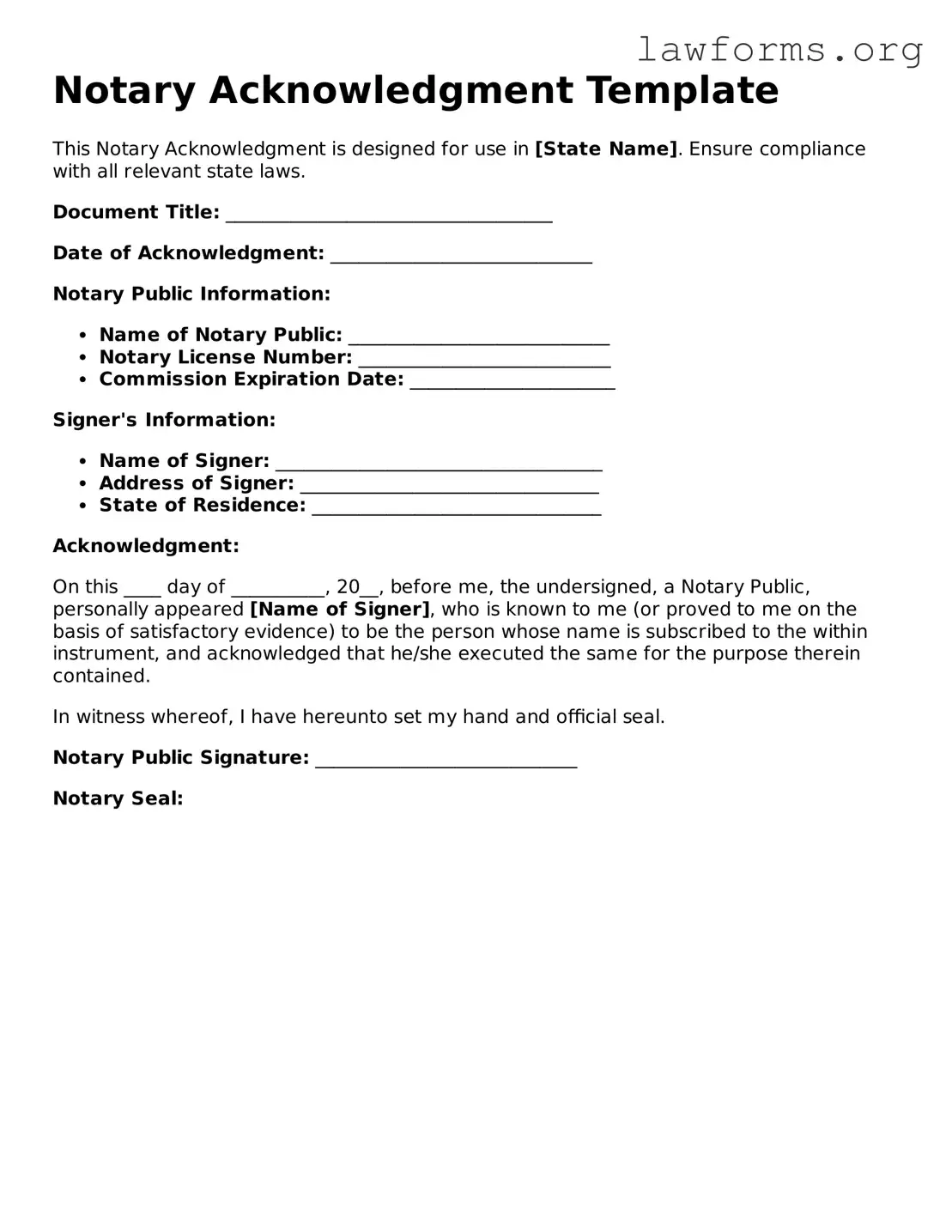Notary Acknowledgment Template
This Notary Acknowledgment is designed for use in [State Name]. Ensure compliance with all relevant state laws.
Document Title: ___________________________________
Date of Acknowledgment: ____________________________
Notary Public Information:
- Name of Notary Public: ____________________________
- Notary License Number: ___________________________
- Commission Expiration Date: ______________________
Signer's Information:
- Name of Signer: ___________________________________
- Address of Signer: ________________________________
- State of Residence: _______________________________
Acknowledgment:
On this ____ day of __________, 20__, before me, the undersigned, a Notary Public, personally appeared [Name of Signer], who is known to me (or proved to me on the basis of satisfactory evidence) to be the person whose name is subscribed to the within instrument, and acknowledged that he/she executed the same for the purpose therein contained.
In witness whereof, I have hereunto set my hand and official seal.
Notary Public Signature: ____________________________
Notary Seal:
